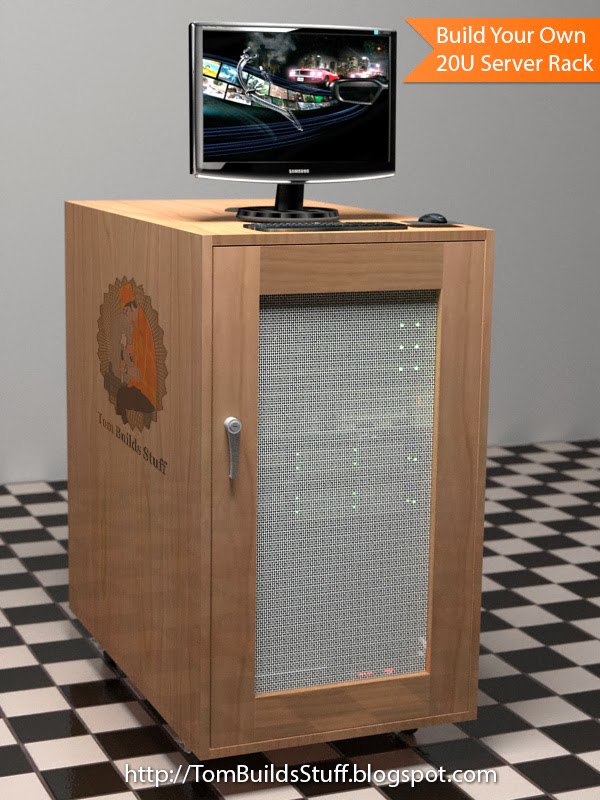Rackmounted Desktops
-
This thread may help you understand licensing requirements to VDI a MS Desktop OS.
http://mangolassi.it/topic/7570/everything-that-there-is-to-know-about-vdi-licensing-with-windows/1
-
@wirestyle22 said:
Is there an open source solution that is Linux based? There must be a way to not pay an arm and a leg for licensing in some way
Is there an open source VDI options? Of course, it's Linux itself. But, of course, if you have Linux, why would you do VDI? VDI exists solely (that's overstating it, but essentially) as purely a workaround to Windows software problems. If you had a solid working Windows platform or had Linux, you'd never consider VDI anyway as the entire concept sucks.
So yes... but no one would ever do it.
-
@Joel said:
Scott you hit the hammer on the head with that last post...VDI is something i'm not going to provide to customers if I dont know much about it....
But for my own sanity....How does VDI work exactly...
-
A super duper spec'd server will be provisioned inside the office (or hosted elsewhere) with some kind of software installed such as XenDesktop, citrix or Horizon and all applications needed and user profiles/accounts configured within there...
-
A customer will have a thin client on their desk which when powered up and logged in, will automatically load into their virtual desktop which is configured/maintained from the server?
-
licenses required per user (or per device) if using generic login
Yup, more or less.
- Server, but you "can" skip the XenDesktop, but it won't work well if you do that. So while not required, that's effectively how it will work.
- Thin client is an option but due to licensing needs, no one does that anymore. You use full PCs much of the time. Same as you do now. The VDI cost is all "on top of" your existing costs.
- If you use PCs, it's per user licensing. If you use thin clients, it is per device.
-
-
If you have ever used Linux terminal servers (and most of us do and they are so powerful and easy and free) and are the only one logged in, it's VDI, too. VDI means a one to one setup. If you are the only one on the terminal server at a given time, that's VDI. Silly, but that's all that it is. So, for example, our jump server is VDI for me when I'm the only one logged on, which is not uncommon.
-
@scottalanmiller said:
If you have ever used Linux terminal servers (and most of us do and they are so powerful and easy and free) and are the only one logged in, it's VDI, too. VDI means a one to one setup. If you are the only one on the terminal server at a given time, that's VDI. Silly, but that's all that it is. So, for example, our jump server is VDI for me when I'm the only one logged on, which is not uncommon.
Can you give some examples of software you use for Linux terminal services? #whatislifewithouttopicderailments
-
@Kelly said:
@scottalanmiller said:
If you have ever used Linux terminal servers (and most of us do and they are so powerful and easy and free) and are the only one logged in, it's VDI, too. VDI means a one to one setup. If you are the only one on the terminal server at a given time, that's VDI. Silly, but that's all that it is. So, for example, our jump server is VDI for me when I'm the only one logged on, which is not uncommon.
Can you give some examples of software you use for Linux terminal services? #whatislifewithouttopicderailments
Well you have a few common choices. One would be to use xrdp to mimic a Windows style desktop. Not commonly chosen because it's not often that you want it to act like Windows and then... surprise, Linux desktop. But in case you have an RDP infrastructure in place, it works.
You can get VNC to do this but it is not well suited to it by default. So I've never seen this done. But possible.
The most common "Linux native" terminal server approach is using NX. This is the Linux world's equivalent to Citrix XenApp. It's very advanced and powerful and super easy to use. This is what NTG uses for our Linux terminal servers and have for over ten years. It works great. Very fast, security is built in, etc. We use it for traditional terminal servers and for graphical jump boxes. Very solid. Available in open source (X2Go) and commercial (NoMachine) versions.
If you want to spend some scratch on hard core Linux terminal systems and/or VDI, Citrix fully supports Linux on XenApp and XenDesktop, too.
-
Here's a good one

-
@Kelly said:
#whatislifewithouttopicderailments
ML would be a boring place with easy to read threads



-
Rack mounted desktops like dell Precisions are great for high end 3d CAD (way way overkill for 2D), Animation, Video Production etc.
Pretty common setup. They make remote graphics cards with client stations designed for these setups.
-
-
@Jason said:
Rack mounted desktops like dell Precisions are great for high end 3d CAD (way way overkill for 2D), Animation, Video Production etc.
Pretty common setup. They make remote graphics cards with client stations designed for these setups.
Yup, while not "in every corner office", the rack mounted desktop is a long standing use case and works quite well.